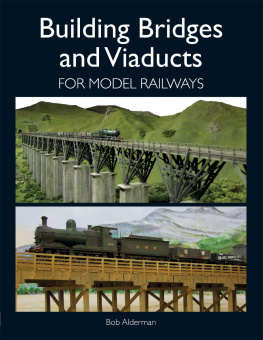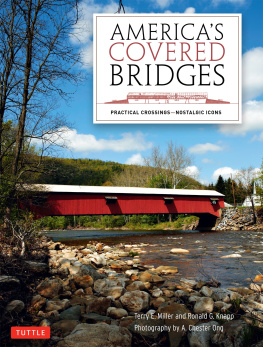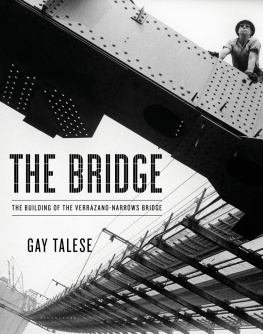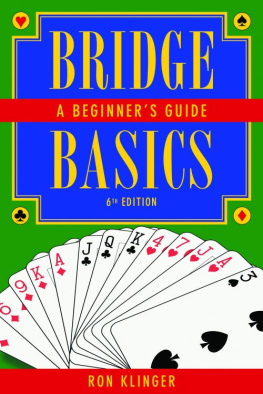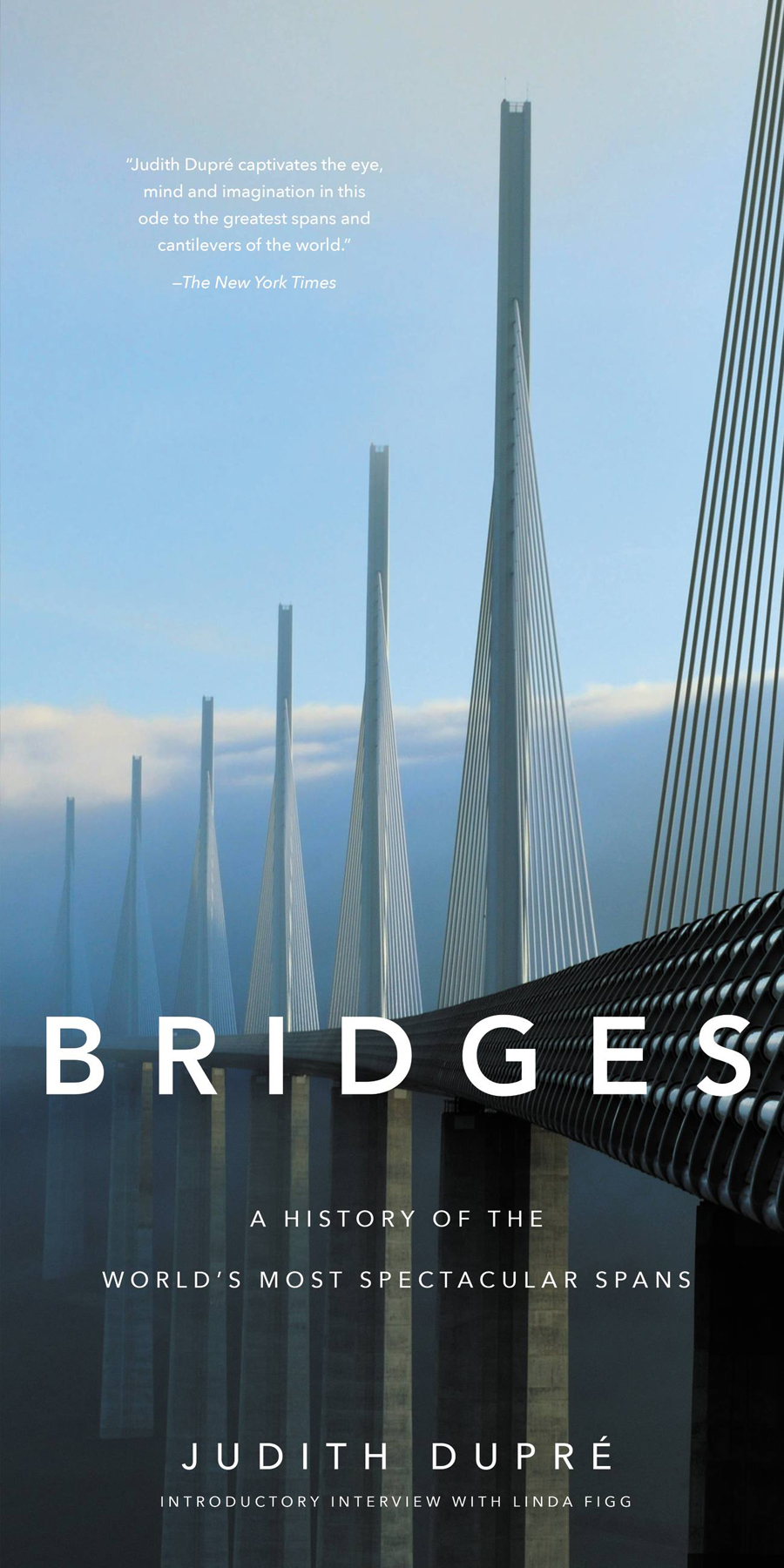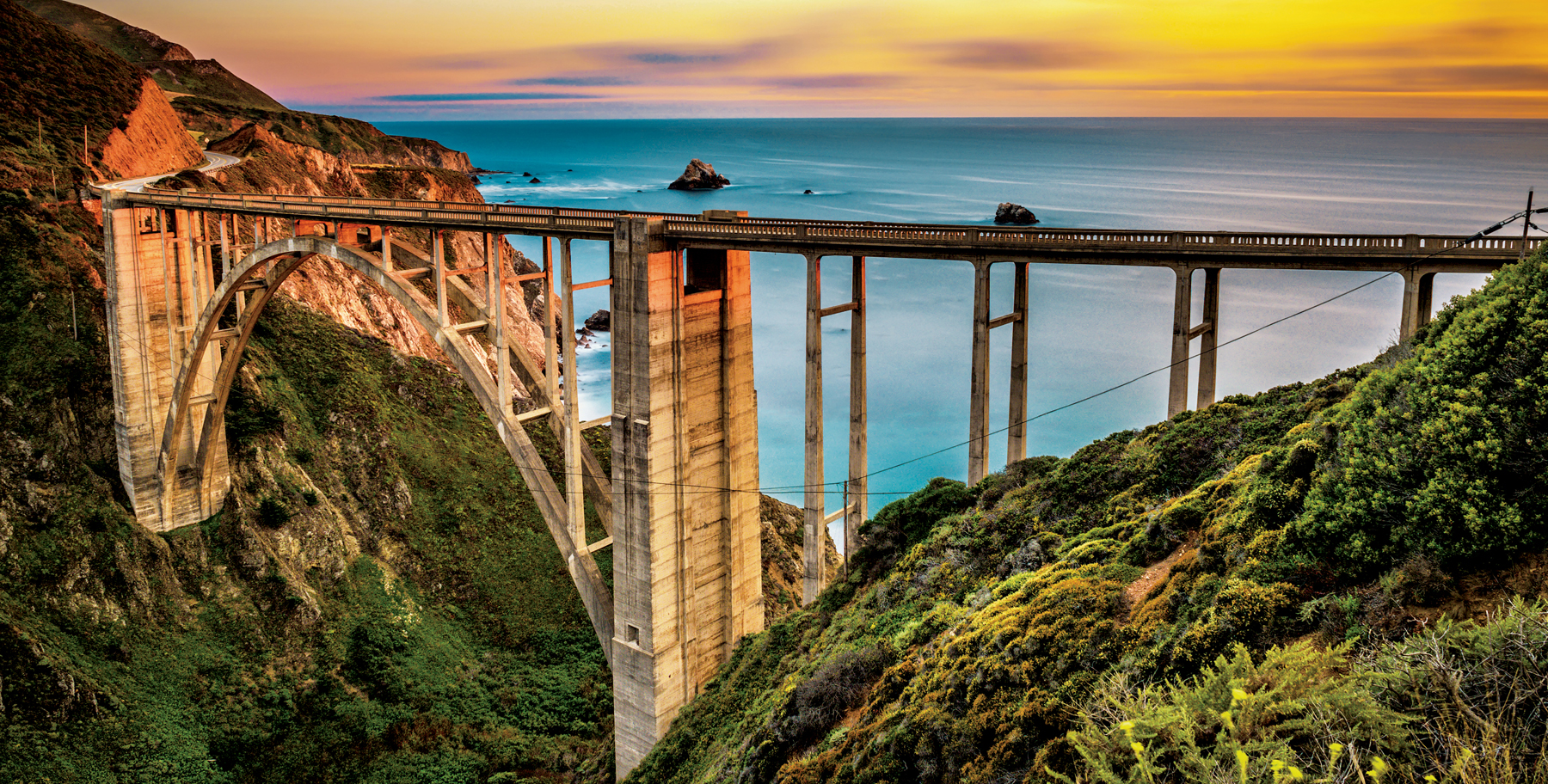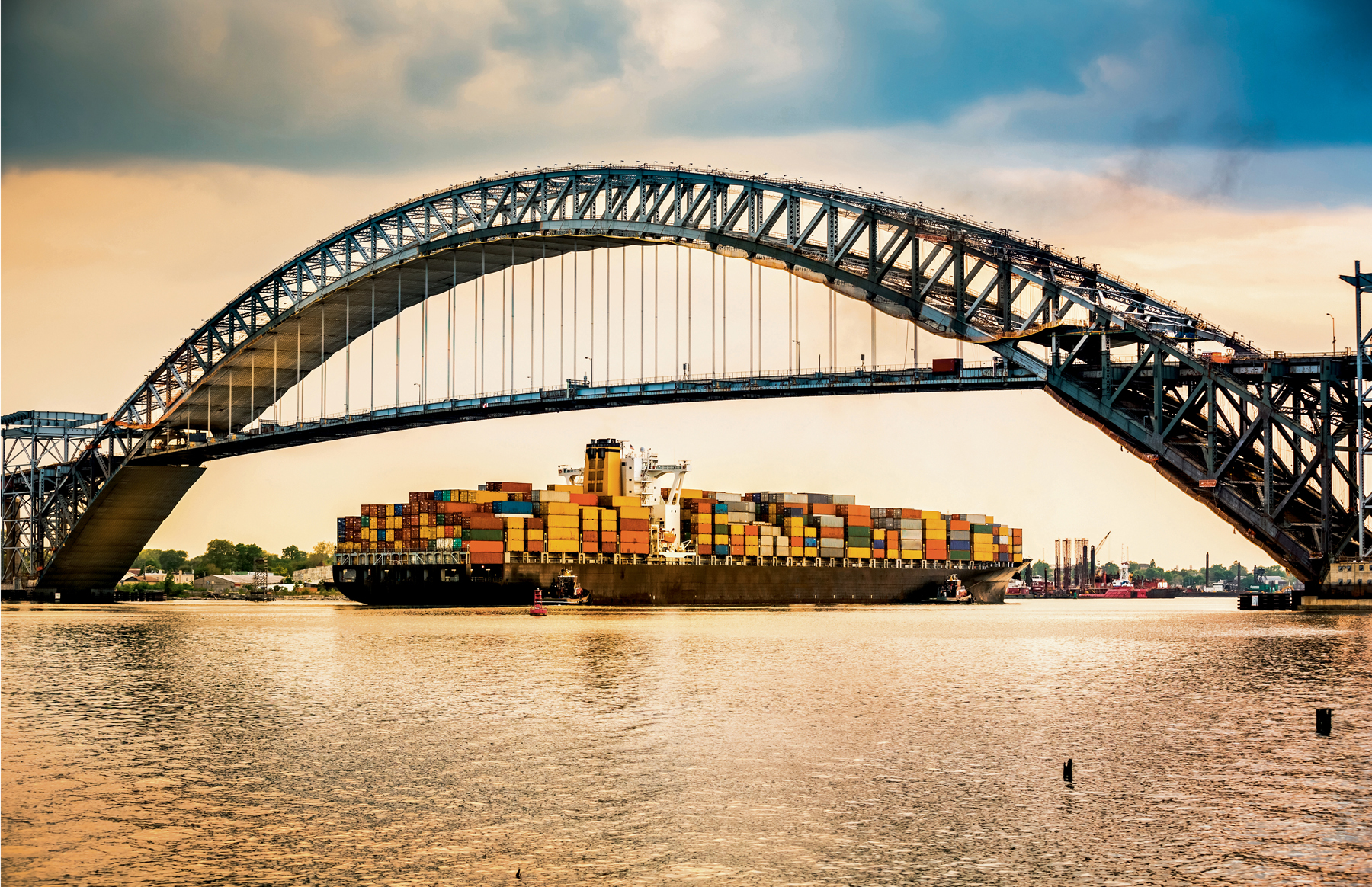Since the first log fell across water, people have been fascinated with bridges and their power to bring together what had been separate. Bridges can evoke exhilaration, triumph, and fear, sometimes simultaneously. They figure substantially in the myths, legends, and allegories of many cultures, with each century adding to the strata of symbolism. Consider the associative power of the Pont Neuf in Paris, the crossing at Chappaquiddick, or a covered bridge across a quiet creek.
Bridges span history. They have been built, burned, defended, and celebrated by kings, queens, monks, revolutionaries, and athletes, as well as by those of us who commute to work each day. Their story has been shaped by the elemental barrier of water and by the cities that grew up along the worlds great waterwaysimagine Paris, London, New York, or Saint Petersburg without their signature bridges. Their many sizes and silhouettes reflect the expansion of economies and technology as well.
Formed from beams, stones, and ropes, the earliest primitive bridges evolved into more complex structures fashioned by highly intuitive, often anonymous hands. The Roman Empires domination of the known world was in part attributable to the Romans particular genius for engineering, manifested in their singular masonry arch bridges, many of which still stand today. Lesser known in the West are the exceedingly fine and innovative crossings constructed by the Chinese. Construction methods employed in the late sixth-century Anji Bridge in Zhaoxian predate anything similar in the West by several hundred years.
The Renaissance saw the rise of the inhabited bridgeexemplified by the Ponte Vecchio in Florence and the Rialto Bridge in Veniceand the Palladian bridge, which would not gain widespread currency until the eighteenth century, when English landscape designers embraced Andrea Palladios bridge designs. The covered bridge is found throughout the world, but was particularly popular in a young North America, where wood was plentiful and time was at a premium.
The introduction of the steam locomotive in 1830 transformed bridge design, construction technologies, and the nascent field of civil engineering. Stone and wood gave way to the use of iron, a material that was exploited by the giants of nineteenth-century rail bridge building in England, including Thomas Telford, Robert Stephenson, and Isambard Kingdom Brunel. By centurys end, the strength and lightness of a new material, steel, was manipulated with genius by James Eads, John Roebling, Benjamin Baker, and Gustave Eiffel.
High-speed rail has had a similarly transformative effect on bridges, today defined by protective technologies that limit vibration, noise, and access to train tracks. Bullet trains, which regularly reach 220 mph (354 km/h) and are getting faster, confer the environmental benefits of mass transit, a gain somewhat mitigated by the vibrations and noise they produce, which can be as loud as a sonic boom, polluting communities near the tracks. Protective bridge designs help limit this and also restrict access to the tracks, whether by people, animals, or airborne debris. Any irregularity caused by debris or less-than-precise structural calibration is potentially fatal for those inside trains that literally travel on air; the fastest maglev (magnetic levitation) trains use powerful magnets to keep them just above the tracks; there is no contact between train and track.
Even before Leonardo da Vinci painted the enigmatic Mona Lisa with a semicircular arch bridge in the background, artists have been drawn to bridges. The bridge at Giverny was Monets muse; the Pont Neuf was Renoirs. Bridges peek from the corners or assume center stage in the paintings of Botticelli, Raphael, Constable, Whistler, Czanne, and van Gogh, to name a memorable handful. The Brooklyn Bridge, of course, is the most painted, sketched, and photographed bridge in the world.
To avoid tearing down the iconic Bayonne Bridge (1931), designed by Othmar Ammann, the Port Authority of New York & New Jersey decided to raise its deck by 64 feet (20 meters), increasing its vertical clearance to 215 feet (66 meters). The retrofit was necessary to accommodate the larger container vessels now using the expanded Panama Canal.










